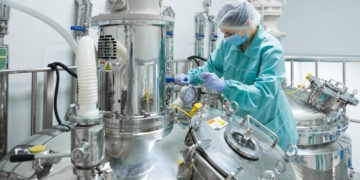Breast cancer, a widely discussed topic, deserves attention for its impact on millions of women globally. It’s essential to delve into the realms of prevention, diagnosis, and treatment options. In this article, we aim to provide comprehensive insights into breast cancer, offering valuable information for women of all ages.
Understanding Breast Cancer
Breast cancer unfolds when abnormal cells in the breast spiral out of control, forming a mass or lump. These can be detected through breast self-examinations or medical screening techniques. It’s crucial to note that breast cancer can affect both men and women, with a higher prevalence in the latter.
Risk Factors for Breast Cancer
Awareness of the risk factors associated with breast cancer is paramount for prevention and early detection. While some factors, like age and gender, are beyond our control, several are within our sphere of influence. These include:
- Family history and genetic mutations: Close relatives with breast cancer, coupled with inherited gene mutations like BRCA1 and BRCA2, contribute to a higher risk.
- Age: The risk escalates with age, with most cases occurring in women over 50.
- Hormonal factors: Prolonged exposure to estrogen, whether through early menstruation, late menopause, or hormone replacement therapy, can heighten the risk.
- Lifestyle choices: Excessive alcohol consumption, sedentary behavior, and obesity are lifestyle factors linked to an increased risk.
Understanding these risk factors empowers individuals to make informed decisions about their lifestyle and take proactive steps to reduce the risk.
Prevention Strategies for Breast Cancer
Prevention takes center stage in the battle against breast cancer. Adopting healthy habits and lifestyle changes can significantly reduce the risk. Key prevention strategies include:
- Maintaining a healthy weight: Balancing diet and exercise helps mitigate the risk associated with being overweight or obese.
- Limiting alcohol consumption: Studies indicate a correlation between excessive alcohol consumption and an increased risk of breast cancer.
- Quitting smoking: Apart from its association with various cancers, smoking contributes to overall health issues. Quitting is vital for reducing the risk of breast cancer and improving well-being.
- Breastfeeding: According to lactation consultants, extended breastfeeding duration is linked to a reduced risk of breast cancer, providing benefits for both mother and child.
In addition to these strategies, regular breast self-exams and clinical screenings are crucial for early detection and intervention.
Early Detection and Diagnosis of Breast Cancer
Advancements in medical technology have revolutionized breast cancer detection, playing a pivotal role in treatment outcomes. Common diagnostic methods include:
- Mammography: Low-dose X-rays detect small lumps or abnormalities, recommended for women over 40.
- Breast Ultrasound: Sound waves produce detailed images for further evaluation, often used alongside mammography.
- Breast MRI: Using powerful magnets and radio waves, MRI provides detailed information, especially for high-risk individuals.
These methods are vital for detecting breast cancer early when treatments are most effective.
Common Symptoms and Warning Signs of Breast Cancer
Breast cancer can present with various symptoms and warning signs, although not all individuals experience them. Awareness of these signs can aid in early detection and timely medical intervention. Some common symptoms and warning signs of breast cancer include:
- Lump or thickening: The presence of a lump or thickening in the breast or underarm area is a common symptom of breast cancer. It is essential to be familiar with the normal feel and appearance of the breasts to identify any changes.
- Changes in breast size or shape: Unexplained changes in breast size or shape can be a warning sign of breast cancer. This includes swelling, dimpling, or puckering of the skin.
- Nipple changes: Changes in the nipple, such as inversion or discharge (other than breast milk), should be evaluated by a healthcare professional.
- Breast pain or discomfort: While breast pain is often unrelated to breast cancer, persistent pain or discomfort that does not go away should be assessed by a healthcare provider.
It is important to note that non-cancerous conditions can also cause these symptoms. However, any unexplained changes or persistent symptoms should be promptly evaluated by a healthcare professional.
Types and Stages of Breast Cancer
Breast cancer is a complex condition with various types and stages. Understanding these nuances is crucial for determining appropriate treatment approaches. Common types include:
- Ductal carcinoma in situ (DCIS): Non-invasive, confined to milk ducts.
- Invasive ductal carcinoma (IDC): The most common type, starting in milk ducts but potentially spreading.
- Invasive lobular carcinoma (ILC): Originating in milk-producing lobules, capable of spreading.
- Triple-negative breast cancer: Lacking specific receptors, making it challenging to treat.
- HER2-positive breast cancer: Characterized by the overexpression of the HER2 protein.
Staging, ranging from 0 to IV, is based on tumor size, lymph node involvement, and spread, guiding treatment decisions.
Treatment Options for Breast Cancer
Once a diagnosis of breast cancer is confirmed, various treatment options are available depending on the type, stage, and individual factors. Treatment plans are often tailored to meet the specific needs of each patient. Here are some common treatment options for breast cancer:
Surgery
Surgery is a standard treatment option for breast cancer and can involve either removing the tumor (breast-conserving surgery) or removing the entire breast (mastectomy). The choice of surgery depends on several factors, including the size and location of the tumor, as well as the patient’s preferences.
Radiation Therapy
Radiation therapy uses high-energy X-rays or other particles to destroy cancer cells. It is often used after surgery to kill any remaining cancer cells and reduce the risk of recurrence. Radiation therapy can also be used to relieve symptoms in cases of advanced breast cancer.
Chemotherapy
Chemotherapy involves the use of powerful drugs to kill cancer cells. It is often used in cases of more advanced breast cancer or when there is a higher risk of cancer recurrence. Chemotherapy can be administered before surgery (neoadjuvant) to shrink the tumor or after surgery (adjuvant) to kill any remaining cancer cells.
Hormone Therapy
Hormone therapy is used for hormone receptor-positive breast cancers. It works by blocking the effects of estrogen or lowering estrogen levels in the body. Hormone therapy may be used alone or in combination with other treatments, such as surgery or chemotherapy.
Targeted Therapy
Targeted therapy specifically targets cancer cells without harming normal cells. It is often used for HER2-positive breast cancers and can be administered alongside other treatments, such as chemotherapy or hormone therapy.
Support and Resources for Breast Cancer Patients and Survivors
A breast cancer diagnosis can be overwhelming, and support is crucial throughout the treatment journey. Numerous support networks, organizations, and resources are available for breast cancer patients and survivors. These resources provide emotional support, educational materials, financial assistance, and practical advice. Some organizations also offer support groups and online communities where individuals can connect with others who have similar experiences.
Promising Advancements in Breast Cancer Research
Breast cancer research continues to propel forward, offering promising advancements in prevention, diagnosis, and treatment. Scientists and healthcare professionals are tirelessly striving to enhance existing therapies and pioneer new approaches. Among the areas of ongoing research are:
- Immunotherapy: Immunotherapy stands out as a beacon of hope in breast cancer treatment by leveraging the body’s immune system to effectively target and eradicate cancer cells.
- Precision Medicine: Precision medicine is revolutionizing breast cancer treatment by tailoring therapy plans to suit an individual’s unique genetic profile, ensuring a more targeted and effective approach.
- Minimally Invasive Surgery: Innovations in minimally invasive surgical techniques are reshaping breast cancer surgery, leading to reduced recovery times and improved patient outcomes.
- Liquid Biopsies: Liquid biopsies, such as the OncoTrail test developed by RGCC, are emerging as a revolutionary cancer test tool for breast cancer detection and monitoring. By analyzing circulating tumor cells present in the bloodstream, liquid biopsies offer a non-invasive alternative to traditional tissue biopsies, potentially transforming the diagnostic landscape for breast cancer.
These groundbreaking advancements instill hope for enhanced outcomes and a higher quality of life for individuals grappling with a breast cancer diagnosis. As research continues to advance, the future holds promise for further progress in the fight against breast cancer.
Conclusion: Empowering Individuals in the Fight Against Breast Cancer
Breast cancer is complex, but increased awareness, early detection, and effective treatments are improving outcomes. Understanding risk factors, prevention strategies, early detection methods, and available support empowers individuals in their fight against breast cancer. Regular screenings, healthy lifestyle choices, and staying informed are pivotal in reducing the burden of breast cancer, ensuring brighter futures for women worldwide. Remember, knowledge is a powerful ally in this journey.














